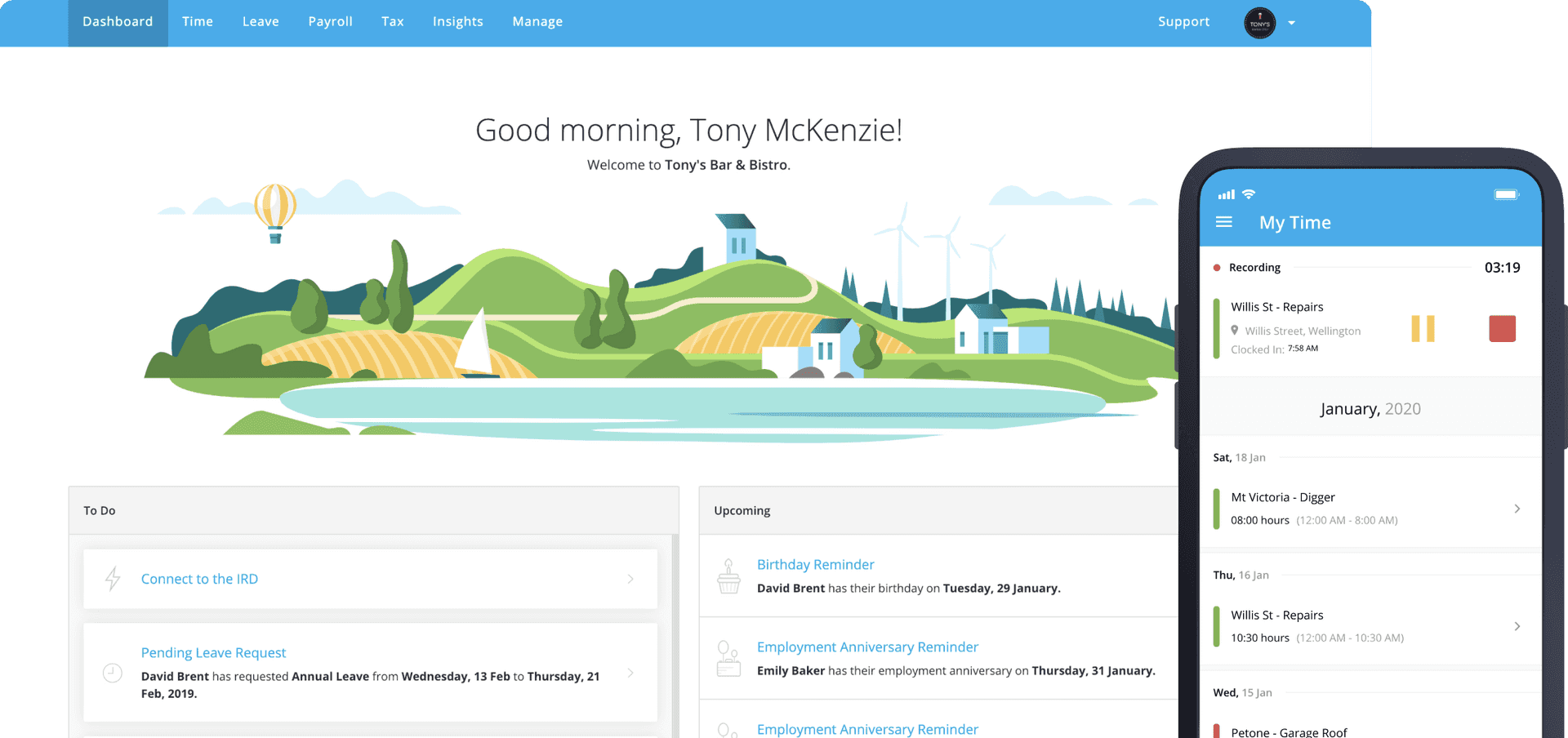Holidays Act
Simplify the rules
May 27, 2015
I’ve got a couple of sons that are fast approaching the teenage years. One thing we do together as a family is play board games. Not the traditional games like Monopoly and Cluedo. There’s a huge range of fantastic contemporary games that make the ones I played as a kid seem pretty lame; games where you’re fighting off hordes of zombies, treasure hunting on a sinking island or rampaging around Tokyo as a giant monster.
I find that a quick look at the rule book is a good indicator of the quality of the game. The best games have simple rules, minimal exceptions and an easy to follow structure.
I've suggested in other blogs how much simpler the ‘rule book’ could be by ditching the complexity around annual leave, holiday pay, alternate leave and public holidays and replacing it with a simple 12% accrual of value and quantity.
Here’s how much simpler it would be.
Currently FlexiTime needs to manage the following information to process annual leave and public holidays:
Leave anniversary date
Annual leave as at last anniversary date
Annual leave taken since last anniversary
Rate and quantity of any leave taken in advance
Annual leave currently due
Annual leave accrued since last anniversary
Gross earning since last anniversary
Holiday pay %
Holiday pay amount
Holiday pay paid in advance
Rolling 12 month earnings, pay by pay
Rolling 12 month hours
Average rate for last 12 months
Ordinary rate for last 4 weeks
Annual leave accrual basis
Rolling 12 months days worked
Average daily rate
Relevant daily pays
Relevant hours per day
Normal days worked by employee
Rules to determine otherwise working day from timesheets
Timesheet records
Alternate leave days balance
That’s quite a list. And there are some very complex calculations behind many of those figures.
What would we need to record for the 12% accrual approach from the previous blogs? Just this:
Available leave value
Available leave quantity
Leave accrual rate (12%, or more if the employee gets more than 4 weeks leave a year)
That’s more like it.
And that’s not all. The handling of all those odd exceptions also gets much easier. Take Parental Leave. Under current legislation, when a parent takes leave after returning to work, their leave could potentially be paid out at two different rates. Leave accrued prior to going on parental leave would get paid at their ordinary rate and leave accrued while on leave gets paid at the average rate, even though this is going to be lower than the ordinary rate. That’s so complex.
With the 12% approach, parental leave becomes simple – just increase the leave quantity for hours accrued, leaving the value as it is. When the leave is taken, the period accruing leave while not being paid is taken into consideration in the rate.
Other areas of inherent unfairness in the current legislation would also be resolved with this simpler approach.
I’m convinced that handling holidays this way would hugely reduce compliance costs. Incidences of non-compliance would be greatly decreased. Employees would have a transparent and uncontroversial view of their leave. MBIE audits would be so much easier – just see how those two available balances are changing over time for an employee. Half the labour inspectors would be out looking for new jobs.
If payroll was a board game and the holidays act the rulebook, I know which version I’d like to play.








